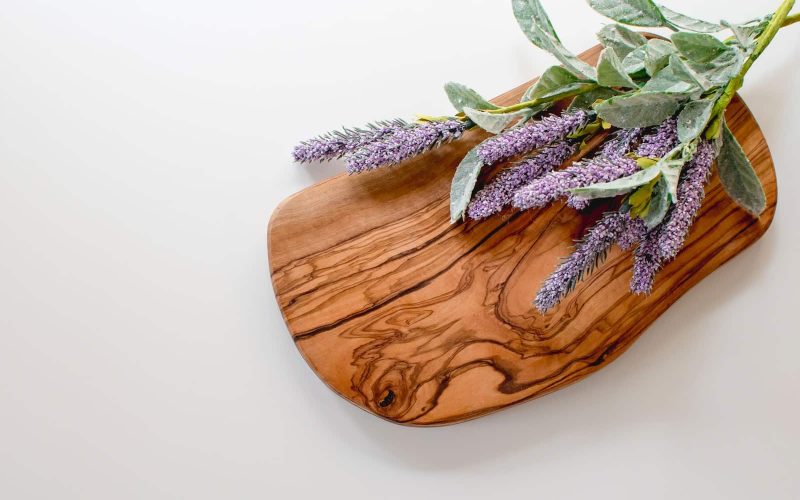Long before the canning industry, grocery stores, and martinis were invented, different types of olives have been a staple of the human diet for thousands of years.
But until a few decades ago, the ordinary American was only familiar with a few kinds.
The best were pimento-stuffed and came in various colors, including green, black, pitted, and green.
However, different types of olives are incredibly varied and adaptable, whether they are blended into spreads and tapenades, added to salads, stewed in stews and sauces, poured into martinis, or eaten out of hand.
Their rich blend of sweet, sour, salty, bitter, and pungent flavors makes them a must-have in any home cook’s kitchen.
They also have historical significance because the Mediterranean culinary canon references their millennia-old cultivation.
Olive tree harvesting extends back more than 8,000 years, making it one of the oldest human traditions. Today, different types of olives are produced for both their fruit and their oil.
The trees flourish in warm, subtropical climates, particularly in rocky soil and sea air. The original olives, native to Syria and Asia Minor, were harvested from low shrubs.
When the Assyrians learned that they could press this fruit to produce tasty, fragrant oil, they set out to cultivate and harvest the shrubby trees.
The olive tree, known scientifically as Olea, thrived and changed over time to become the robust tree we know today.
Olive trees are not grown from seeds but rather from cut roots or branches that are either grafted into other trees or buried in the ground and left to rot.
The Mediterranean coast and other subtropical regions, such as Latin America and the United States, produce different olives.
Most of our domestic olives originate from California, which also has fantastic wine regions and weather that are generally friendly to olive trees.
Olive trees, on the other hand, develop even more slowly and demand precise care; in return for this substantial investment, their longevity benefits many generations. They have incredibly long lives; some go on for millennia.
Different types of Olives differ based on their genetics, location, environment, and how they were harvested and aged. As a result, thousands of olives, each possessing its personality, are produced.
An infinitely long olive menu would be impossible to categorize in a single article if you consider marinating, seasoning, and stuffing the small fruits.
But don’t worry! Here on our blog are some famous Olives dishes to learn about and enjoy.
1. Kalamata
Kalamata is first on our list of different types of olives. The beloved and well-liked Kalamata olive is the king of Greek table olives.
It is deep purple, has tight, snappy, shiny skin, and has a lovely almond shape. They are often kept in vinegar, red wine, and olive oil for a uniquely rich, smoky, fruity flavor.
Although this kind is a fantastic choice for tapenades, I enjoy them when they are paired with roasted cauliflower.
2. Castelvetrano
The most popular snack olive in Italy is the Castelvetrano olive. They are del olives, a bright green olive from Castelvetrano, Sicily, frequently referred to as dolce (sweet).
They feature meaty, buttery flesh, a moderate flavor, and a Kermit-green color. Think about pairing them with a crisp white wine and sheep’s milk cheese.
3. Liguria
This little species, sometimes known as Taggiasca different types of olives, has a robust flavor profile considering its diminutive size.
The olives are similar and are farmed in Liguria, Italy’s northwestmost area, just a few miles from France’s Niçoise olive region.
Typically, they are cured with a fragrant concoction of bay leaves, rosemary, and thyme.
4. Gaeta
These Puglian different types of olives are small, purplish-brown, and wrinkled. They have a sharp, lemony flavor and delicate, fragile flesh.
Gaeta’s can be brine-cured or dry-cured (chewy) (plump, juicy). I enjoy eating them out of bowls for snacks or simply over pasta with capers and pine nuts.
5. Picholine
These French green olives in torpedo form have a flavor that is acidic, nutty, and anise-like and are incredibly crisp and crunchy.
They add a welcome punch to risotto or a meaty stew and are attractive and sophisticated enough to offer as oeuvres.
6. Gordal
Spanish for “fat one,” These different types of olives are very substantial, unashamedly plump olives with lots of robust, meaty richness to match their imposing girth, so the moniker is deserved.
These well-liked tapas olives are produced in Andalucia, Spain, where hardy Gordal trees prosper in the dry climate. Serve them with a glass of sherry and some Jamon.
7. Cerignola
In the heel of Italy’s boot, in the Puglia area, Cerignola is where these enormous green different types of olives are picked.
They have a great buttery crunch. They are easily stuffable due to their substantial size and pair particularly well with garlic, cheese, capers, and anchovies.
8. Manzanilla
Manzanilla is next on our list of different types of olives. This well-known, amiable, oval-shaped olive from Spain is brine-cured, with a crisp texture and a flavor that is a little smoky and almond-like.
They are frequently stuffed with pimientos or cracked and tossed in fresh garlic and olive oil. A perfect appetizer, especially when accompanied by cold Fino Sherry and crispy bread.
9. Mission
The exclusive olive child of the USA. Scientists at the University of Spain in Cordoba could not connect it to Spain’s 700 different olive kinds, even though its origin was considered Spanish.
Since the 1700s, mission olive trees have thrived in California; most of the harvest is used to create olive oil, but table olives that are brine- and oil-cured are mild, grassy, and flavorful.
10. Alfonso
Although Tacna province on the foothills of the La Yarada mountains, where Alfonso’s different types of olives were first grown, is historically considered Chilean, it has been governed by Peru since 1929.
Huge, deep purple olives that have been brine-cured and then macerated in red wine are what these are.
They have a trace of sour bitterness and are meaty, luscious, and pliable. It’s a cultivar frequently paired with charcuterie and a bottle of robust red wine.
11. Nyon
Heart-stopping are these tiny, jet-black different types of olives from the south of France. The big, wrinkled olives are meaty, somewhat bitter, and bursting with flavor from their dry curing and brine aging.
With Provençal olive oil and aromatic herbs like rosemary and thyme, they taste outstanding.
12. Niçoise
Nicoise is also on our list of different types of olives. The delicate Niçoise olive, grown on an olive tree variety known as “Le Cailletier,” is a key component in the traditional French Riviera meals like tapenade and salade Niçoise.
However, they taste just as delicious chewed on their own. The Niçoise has a strong herbal scent with hints of licorice that is a little robust but not overbearing.
13. Amfissa
These hand-picked different types of olives come from the hills near Delphi, the fabled location of the ancient Greek oracles.
They are plucked from their branches and slowly brine-cured when overripe to extract a gentle, fruity flavor and melt-in-your-mouth softness.
Amfissa olives are famous in Greece and frequently used in soups and stews. They go well with cheese and cured meats as well.
14. Beldi
Lastly, on our list of different types of olives is Beldi. Morocco grows hundreds of different olives, but only a few are exported.
You’re fortunate if you can get your hands on these. They have a wild, strong flavor and are dry-cured.
Serve them in salads, tagines, or with good olive oil and hot pepper flakes as the Moroccans do.
Conclusion
In conclusion, if you don’t particularly enjoy tiny fruits, you must acknowledge that different types of olives are among the most adaptable stone fruits on the market.
They are useful for various culinary uses because their flavor ranges from sweet and salty to sour and bitter.
They can be consumed fresh or made into tapenades, added to sauces, stews, stuffing, and salads, or used to make martinis.
We hope our blog has helped you with the different types of olives you need. Enjoy yourself as you visit!!!








